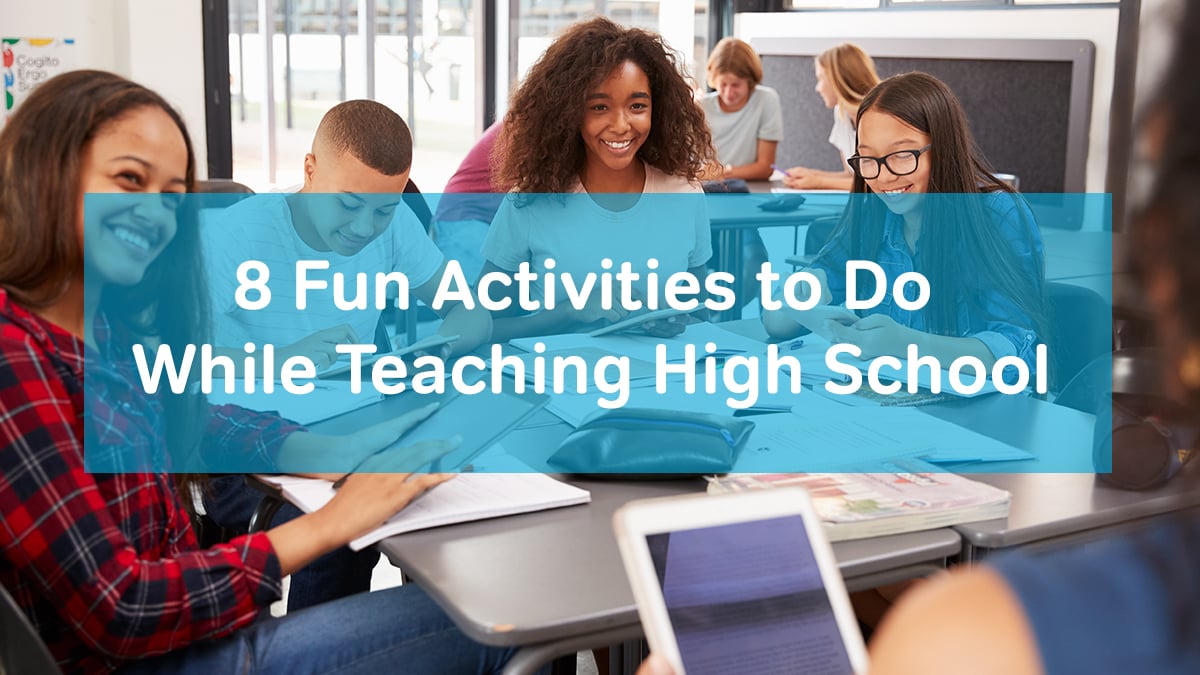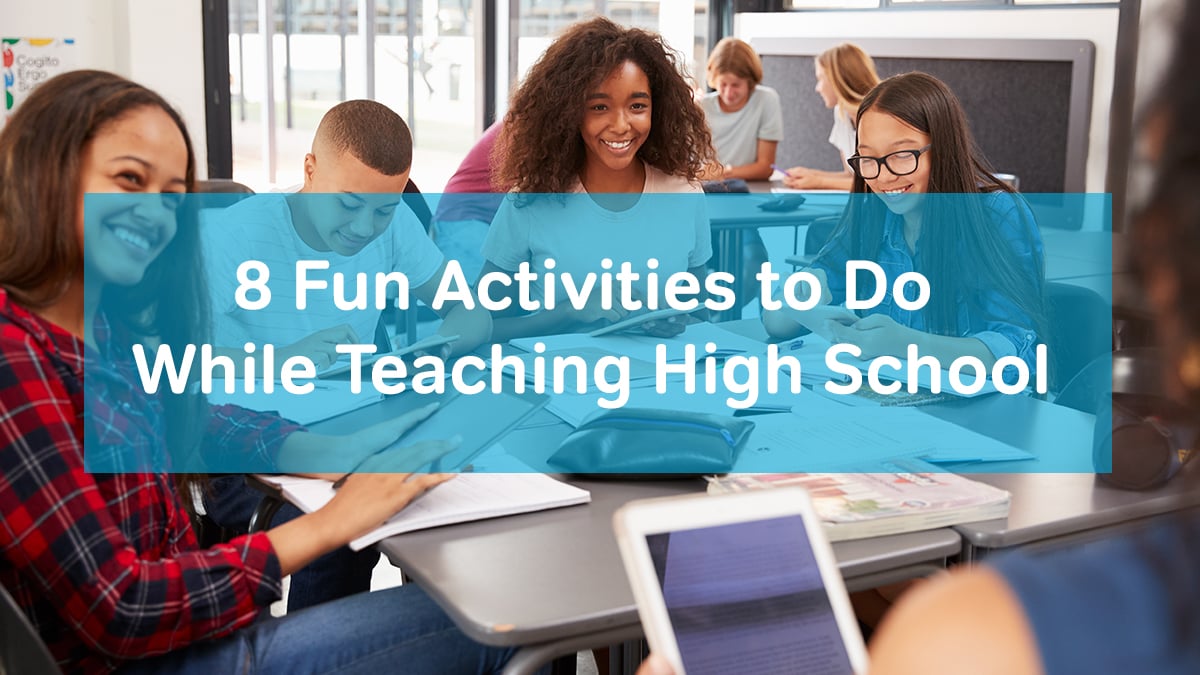
One of the reasons I decided to teach high school was because I think Language Arts is fun—unfortunately, many people disagree with me. So as I create lesson plans, I’ve worked to include fun activities that are suitable for high school students. I want students to discover how Language Arts (or any subject) can be fun. Here are eight of my best practices!

1. Found Poetry
If you tell students that you’re going to be writing poetry in class, you’re probably going to get a lot of groans and grimaces. That’s one of the reasons I like to use found poetry to introduce the unit. It’s a form of poetry that uses words, phrases, or entire passages from other sources, and reframes them to create a kind of poetry collage. This can be done either by blacking out or highlighting portions of the text, or physically cutting up and reordering existing words.
Here’s an example of found blackout poetry that has been created using Vladimir Nabokov’s Lolita:
 Photo Credit: Chris Lott
Photo Credit: Chris Lott
I like to have my students make found poetry by cutting up magazines and newspapers, too. It’s a fun arts and crafts activity that can be done during class or at home. Here’s an example of the collage-style approach to found poetry:

Photo Credit: Derrick Tyson
Students rearrange the words to create new meaning, and can also add more artistic visual elements. It’s a great way to get students to think about a book, historical passage, or other document in a new way!
2. Children’s Books
Have you ever read a children’s book to a group of high school students? They love it. It brings them back to their elementary school days, I guess, and they can pick up on any jokes Easter Eggs that have been inserted into the story for parents to enjoy. Students will also be able to analyze the shifts in content and tone between children’s books and books for older readers that cover the same topic, which can be an interesting discussion topic.
Here are a few ways you can incorporate children’s books into your classroom plan:
- Read out loud as a group during class
- Coordinate your class to read the relevant books to a group of elementary school students who are learning about the same topic
- Have students create their own children’s books, in class or as an assignment— It’s a great way to get students to go through the writing process in a fun way, plus the topic of homemade children’s books can be adjusted to cover any subject the class is studying
While the vast majority of any high school language arts curriculum will, of course, be covering high school-level reading materials, throwing a children’s book into the mix every once and a while can shake things up, and provide students with opportunities for creativity as well as critical thinking.
3. Dramatizations and Simulations
When I was in high school, my Language Arts teacher had us simulate elements of the dystopian world described in George Orwell’s 1984; we were expected to wear jeans and a white shirt and pretty much act as emotionless as possible throughout the class period. This participatory activity really helped us examine and understand the themes in the book, and it’s a great template for how simulations can be used to keep your students engaged with the reading.
Look for ways to make the subject material come to life through dramatizations or simulations for other novels, subjects, or topics. The 1984 simulation was immersive, but relatively straightforward. You can adapt your activities to be as simple or complex as you want, to suit the material. Even just assigning different characters to different students and reading out loud to the class can keep your students more engaged with the subject matter.
4. Mock Trial
A mock trial forces students to study the material, create their own opinions, and defend their viewpoints. It’s a fun and interesting way to get students thinking, and students tend to prepare more thoroughly when they know they’ll be performing in front of their peers. Here are a few mock trial ideas you can try out in groups or as a class:
- Put historical or literary character on trial
- Debate a relevant moral or political issue as a class
- Reenact trial or judgment scenes from the books you’re reading
- Have students analyze and defend varying literary interpretations of the material
Virtually anything can be up for debate, and it’s a great way to make sure your students have a strong grasp on the subject matter.
5. Questionnaires
I love using questionnaires in class because they give everyone an equal opportunity to think about and speak about the reading, and the questionnaire format can help provide some structure for students who aren’t as comfortable sharing their thoughts in front of the class. Plus students often come up with more interesting questions about the reading than I would have come up with on my own!
Here’s how I do it in my class:
- Divide the class into several groups
- Give each group time to write a few questions about the material
- Rotate each set of questions to a different group
- Have the groups discuss and decide on their own answers internally
- After discussion, groups can share out their ideas with the class, and can debate their answers with the authors of the questions
- Repeat!
You can also use a version of this to support high school test prep by using ACT or SAT questions and having the students consider the possible answers in small groups.
6. Movies, Podcasts, and Memes
Let's face it there is an overwhelming amount of technology that you can use in the classroom. Social media is everywhere. High schoolers are bombarded with video clips, new stories, memes, and countless other forms of online digital content.
It’s entirely possible that your students will be more familiar with the popular technology than you are, so consider crowdsourcing some ideas from your class, and then set them loose to create their own viral videos, podcasts, and memes based on the subject matter.
Students will enjoy putting their tech savvy to good use, and viewing literature through the lens of modern media can help students reframe the readings in a context that may feel more relevant to their lives.
7. DIY Games
Students love to play games in class, and (similar to simulations or mock trials) participatory peer-led activities help keep them invested in learning the material. One great hack that I use for in-class review games is to have students create their own games:
- When students construct DIY study games it saves me the trouble of having to design games myself and it delivers a larger volume of games to the class, which means so there’s a higher chance that at least a few of the games will be hits with the students.
- Designing a game requires an even deeper level of critical engagement than playing a game—your really have to know the material to make a coherent game about it—so even if a student creates a game that the class doesn’t necessarily want to use again, the student will still have spent valuable time reviewing the material in the process of making the game.
- Students can also play each other’s games, which adds a layer of fun for everyone!
8. Service Opportunities
This is a great one—get students out of their seats and helping others!
Find service opportunities that help students make real-world connections with what they’re learning. It will help them think about others, and they’ll enjoy the opportunity to serve. Some common volunteer activities include:
- Soup kitchens
- Animal rescue shelters
- Hospitals and care facilities
- Fundraising
- Museums, libraries, and other public services
- Beach cleanups
- Teaching or tutoring
- Political campaigns
- Job placements
What activities have you used with your students? Tell us about some of the fun activities to do while teaching high school in the comments below!


